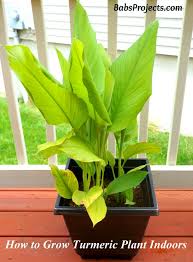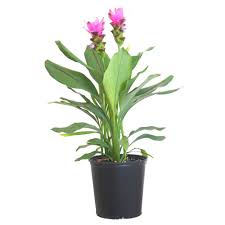Turmeric is a perennial herbaceous flowering plant that grows very slowly. As the plant matures, it will produce lush, tropical-looking leaves. It likes 70 degrees Fahrenheit. It also likes a lot of water. It is a root.
GROWING TURMERIC FROM RHIZOME
Select a wide, shallow pot that is at least 12-18 inches in diameter and 12 inches deep to accommodate the root system. Ensure the container has good drainage holes. Use a rich, well-draining potting mix, and bury a piece of rhizome (the part you buy at the store) with a few “buds” or growth nodes facing up, about two inches deep. Place the container in a warm, sunny location, as turmeric thrives in heat and loves full sun. Water the plant regularly, keeping the plant growing. It will take a few months to start growing. Once it does it will grow steadily until it is ready to harvest. Turmeric needs at least 6 to 8 hours of sun daily. Keep it in a sunny area. Watch it grow enjoy it.
Fertilize it every few weeks with a layer of compost to encourage robust growth. The plant will typically be ready for harvest about 8 to 10 months after planting, usually when the leaves and stem start to turn yellow and wither. At this point, you can carefully tip the container over and dig out the rhizomes. Cut off the new rhizomes, saving a few for the next planting season, and enjoy your fresh, homegrown turmeric.
Turmeric, a yellow spice native to Southeast Asia, has healthy properties, largely due to its main active compound, curcumin. Curcumin is an antioxidant and anti-inflammatory agent, which may help protect the body from damage caused by chronic inflammation. It is used as a powder ingredient to add in many drinks. In addition to its medicinal uses, turmeric is used in many cuisines, particularly in South Asian and Middle Eastern cooking, where it is used to add a distinctive color and flavor to dishes like curries. It is also a common ingredient in other food products, such as mustard and pickle.




